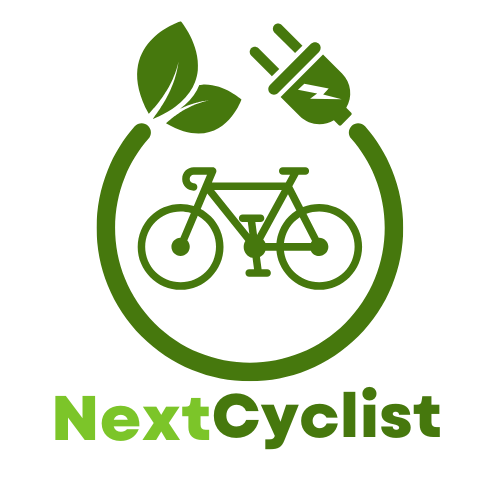25 km/h is considered fast for an electric bike. Many electric bikes have a standard speed between 20 to 28 km/h. Therefore, riding at 25 km/h provides a good balance of speed and control for most users.
Introduction
Are you wondering if you’re getting all the speed you can from your e-bike? Speed matters when you’re out on the road, not just for thrill-seekers but also for safety and efficiency. If you’re hitting the pavement at 25 km/h, you might be asking yourself: is that fast for an electric bike? This number plays a significant role in your overall riding experience and can affect how you navigate different terrains and traffic situations.
So, what does this speed really mean for you? In this article, we’ll break down the ins and outs of e-bike speeds, compare 25 km/h to typical ranges, and help you understand what it means for your rides. By the end, you’ll have a clearer picture of whether your e-bike is keeping up with the fun or if it’s time to tweak a few things. Stick around—your next ride could be much more exhilarating!
TL;DR
- 25 km/h (15.5 mph) is the maximum safe speed for e-bikes in many regions.
- Exceeding this speed may lead to legal issues or additional requirements.
- Battery life decreases rapidly at higher speeds; maintaining a constant pace is ideal.
- Rider weight impacts speed: heavier riders typically go slower.
- Terrain influences performance; flat roads enable higher speeds compared to hilly routes.
- Weather conditions can enhance or hinder speed; plan rides for favorable conditions.
- Consider gear adjustments and load minimization to maximize your e-bike’s performance.
Understanding Speed Limits for E-Bikes
When it comes to e-bikes, 25 km/h (15.5 mph) is commonly regarded as the maximum speed. This limit is essential not only for safety but also for legal compliance in many regions. Here’s why understanding this speed is crucial for all riders.
- Safety First: E-bikes are designed with a maximum speed of 25 km/h to minimize risks for riders and pedestrians alike. This speed helps maintain control and stability, especially in crowded areas where quick stops may be necessary.
- Legal Requirements: In many places, riding an e-bike faster than this limit may require additional registrations or licenses. This means that if your e-bike exceeds this speed, you could potentially face fines or other penalties. Always check local laws to stay on the right side of regulations.
- Battery Life Matters: Speed impacts the battery life of your e-bike. Riding at maximum speed can drain your battery quicker than when you maintain a steady pace. Understanding how speed affects battery life will help you manage your rides and plan for longer trips without unexpected stops for charging.
Here’s a simple comparison table to illustrate the key points regarding speed limits and battery impact:
| Speed (km/h) | Time to Drain Battery (%) | Legal Status |
|---|---|---|
| 25 | Moderate | Typically legal |
| 30 | High | May require registration |
| 35+ | Very High | Often illegal without a license |
By keeping these factors in mind, you can enjoy your e-bike while ensuring both safety and compliance. For more on maintaining your e-bike, check out our guide on e-bike maintenance tips and learn how to manage your e-bike’s usage effectively.
Factors That Influence E-Bike Speeds
Understanding the factors that influence e-bike speeds is key to optimizing your rides. The speed of your ebike isn’t just about the power of the motor; several other aspects come into play. Let’s break it down.
Rider weight and gear significantly impact the speed you can achieve.
One of the biggest factors affecting how fast your electric bike can go is rider weight. Heavier riders may find that their ebike doesn’t reach the same speeds compared to lighter counterparts. Additionally, the type of gear you’re using can either add to or subtract from your speed. Here are some considerations:
- Adjust your gear: Use lighter gear for better acceleration and speed.
- Keep your load light: If possible, minimize any extra weight carried on your bike.
Terrain type, such as hills, can affect how fast your e-bike performs.
The terrain is another crucial factor. Riding on hilly terrain can significantly slow your speed. Flat roads are obviously easier for maintaining higher velocities, while steep inclines can drain your battery quicker as well. To maximize performance on various terrains:
- Plan your route: Opt for flat paths whenever feasible.
- Use pedal assist: Activate higher levels of assistance while climbing hills to keep your speed up.
Weather conditions, like wind resistance, can either enhance or hinder your e-bike’s speed.
Don’t overlook how weather conditions can impact your ride. Strong winds can create significant resistance, slowing you down. Conversely, a good tailwind might give you that extra boost. Here’s how to adjust:
- Check weather forecasts: Plan your rides around favorable weather for optimal speeds.
- Dress appropriately: Streamlined clothing can help reduce wind resistance; avoid baggy apparel while riding.
| Factor | Impact on Speed |
|---|---|
| Rider Weight | Heavier weight = slower speed |
| Terrain Type | Hilly terrain = reduced speed |
| Weather Conditions | Strong winds = hindered speed |
By considering these factors—rider weight, terrain type, and weather conditions—you can optimize your ebike performance and enjoy a faster, more efficient ride!
To sum it up, understanding if 25 km/h is fast for an e-bike hinges on safety, legality, and performance. While this speed might seem moderate, it’s important for maintaining control and complying with local regulations. Factors like rider weight, terrain, and weather play big roles in your actual riding speed, and keeping them in mind can help you make the most of your rides.
Now, if you’re ready to amp up your e-bike experience and tackle those DIY maintenance tasks like a pro, check out our e-bike maintenance guide for smart tips and tricks that save you time and money. You’ve got the skills, so let’s keep that thrill alive on your next ride! Remember, the road is waiting for you—get out there and enjoy!

